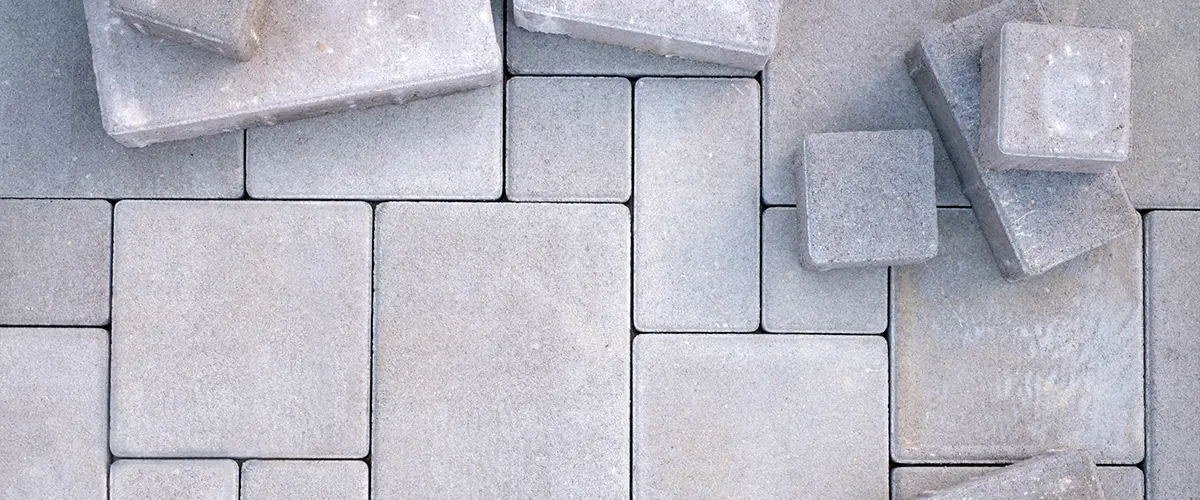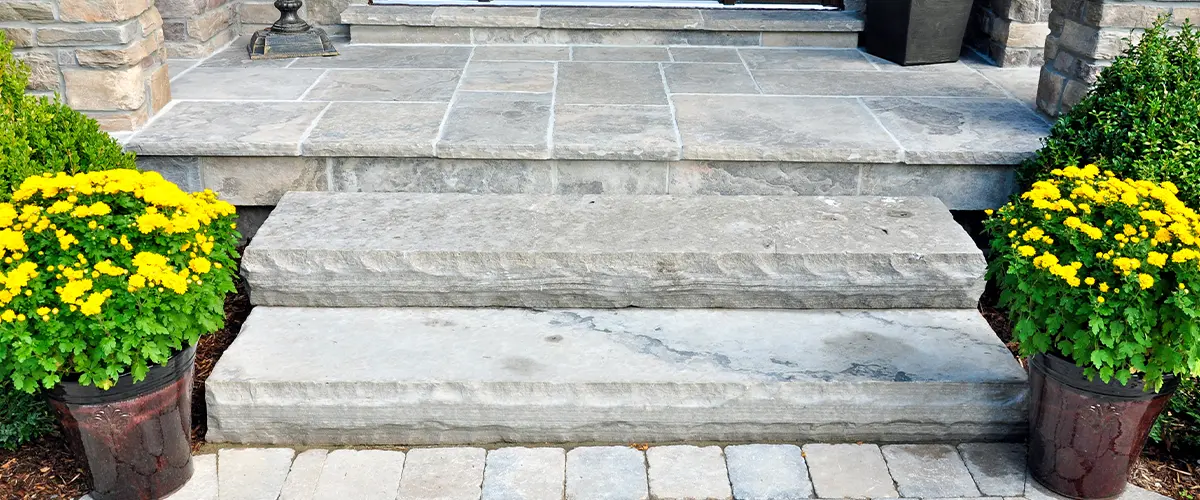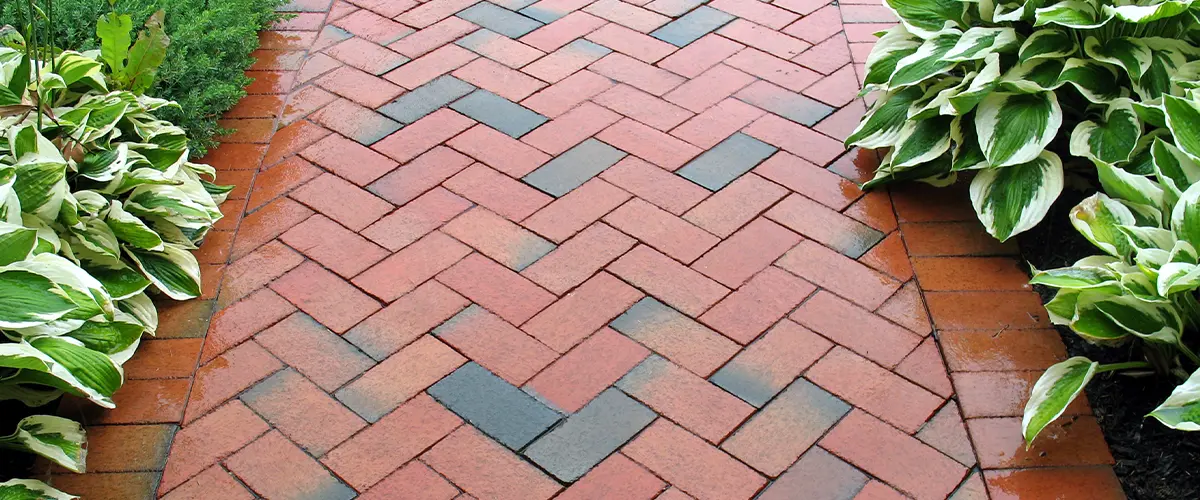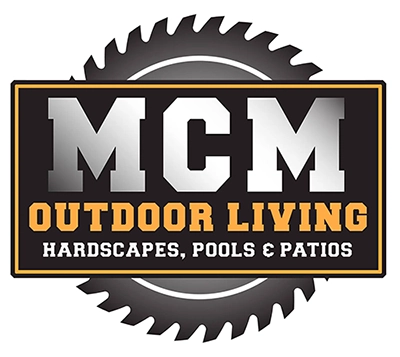Top 5 Paver Patio Materials for a Beautiful Outdoor Space
Choosing the right paver material can shape how your patio looks, feels, and performs over time. In North Texas, outdoor spaces deal with long summers, shifting clay soil, and strong sun exposure. These conditions make some materials more practical than others.
Homeowners often ask about surface temperature, long-term durability, and how much maintenance a patio will need as it ages. The goal is to pick a material that works with the environment and supports how you plan to use your outdoor space.
This guide covers the most reliable paver patio materials we’ve worked with and how they compare in cost, upkeep, and appearance.
Paver Patio Material Comparison
Each patio material comes with trade-offs in durability, upkeep, and aesthetics. Use this overview to get a quick sense of how they compare.
| Paver Material | Cost Range | Durability | Maintenance | Appearance |
|---|---|---|---|---|
| Concrete Pavers | Moderate | Long-lasting | Easy to maintain | Clean, consistent finish |
| Natural Stone | High | Extremely durable | Needs occasional sealing | Textured, natural surface |
| Brick Pavers | Moderate | Fairly durable | May require more upkeep | Classic, rustic appearance |
| Gravel / Decomposed Granite | Low | Limited durability | Needs regular topping | Loose and informal look |
| Porcelain / Travertine | High | Durable in heat | Very low upkeep | Smooth and modern feel |
Materials behave differently depending on layout and foundation prep. In North Texas, we often recommend adjusting base depth to handle clay soil movement and drainage.
1. Concrete Pavers

Concrete pavers are one of the most popular choices for patio surfaces in North Texas. They’re manufactured for strength, come in a wide range of sizes and colors, and fit most design styles.
This material handles heavy foot traffic well and works on a variety of layouts, including grid patterns and curved edges. It’s also easier to replace individual pieces if one ever cracks or shifts. That flexibility is a big plus in areas with unstable soil or frequent temperature swings.
Concrete pavers typically have a smooth, uniform surface. They can be styled to mimic natural stone, but with cleaner edges and a more controlled appearance. This makes them a solid choice for patios, walkways, and pool decks that need to blend with modern or transitional outdoor designs.
Best for:
- Homeowners who want a clean, modern look
- Patios that need to handle lots of use
- Projects where budget and durability both matter
2. Natural Stone

Natural stone creates a high-end look that feels timeless and grounded. Materials like flagstone, limestone, and sandstone offer irregular shapes, earthy colors, and textured finishes that make every patio feel unique.
Stone patios hold up well over time, especially when installed on a stable base with proper drainage. While the surface is more rugged than concrete, it’s also slip-resistant and naturally blends into landscaped yards or garden-style layouts.
The biggest draw is the aesthetic. No two pieces are the same, which makes the layout feel organic. However, because these materials are heavier and harder to cut, they often take more time to install. Sealing may also be needed periodically, depending on the type of stone and the amount of shade or moisture the patio gets.
Best for:
- Homes with a natural or rustic design
- Backyards where visual texture is important
- Patios that double as entertaining spaces
3. Brick Pavers

Brick pavers offer a classic look that works well in both traditional and historic-style homes. They have a warm tone, a tight layout, and a familiar texture that adds charm to patios, walkways, and courtyards.
Most brick pavers are made from clay and fired in kilns, which gives them strength and color that won’t fade over time. While not as strong as concrete or stone under heavy loads, they hold up well for foot traffic and light furniture use.
The main trade-off with brick is maintenance. Over time, the surface may show wear or moss buildup, especially in shaded or damp areas. Brick patios also require careful installation to avoid shifting or uneven spots, since clay is more prone to movement than manufactured pavers.
Best for:
- Homeowners who want a traditional or historic design
- Patios with curved borders or herringbone layouts
- Projects where visual warmth is a key design feature
4. Gravel / Decomposed Granite

Gravel and decomposed granite are loose-fill materials that offer a more relaxed, informal look. They’re often used in garden paths, side yard walkways, and low-cost patio builds where drainage and flexibility matter.
Because these materials aren’t solid pavers, they don’t require precise cutting or mortar. This makes installation faster and less expensive. The surface stays permeable, which helps reduce runoff and pooling after heavy rain.
That said, loose materials need more upkeep. Wind, foot traffic, and weather can shift the surface over time. Areas with chairs or heavy use may need periodic raking or topping off. Bordering the space with metal or stone edging helps contain the material and maintain a clean shape.
Best for:
- Homeowners who want a soft, natural feel
- Projects with limited budgets or time
- Garden-style patios or secondary outdoor areas
5. Porcelain / Travertine

Porcelain and travertine pavers are known for their refined appearance and high-end feel. Both offer smooth surfaces, light color tones, and finishes that work well around pools, patios, and modern outdoor spaces.
Porcelain is manufactured for strength, stain resistance, and low water absorption. It stays cooler underfoot than concrete in direct sun and doesn’t require sealing. The texture is often slip-resistant, even when wet, which makes it a popular choice for pool decks and open patios.
Travertine, a type of natural limestone, has a more organic look with soft color variation and a textured surface. It holds up well to temperature swings and feels comfortable under bare feet. Like other natural stones, it may need occasional sealing, especially in shaded or damp areas.
Best for:
- Outdoor spaces with a clean, modern design
- Poolside patios or covered sitting areas
- Projects where comfort and finish quality are priorities
Area Conditions That Can Impact Your Patio
Soil conditions, climate, and layout all affect how well a patio performs over time. Choosing the right material is only part of the equation. Matching it with the environment and the build method matters just as much.
Here are a few key factors we often account for during patio projects in this region:
Soil Movement
Clay-heavy soil expands and contracts with moisture. Over time, this can cause uneven settling or surface shifting. Heavier materials like natural stone or brick may require a deeper base or additional compaction to stay level.
Drainage and Water Flow
Some backyards have poor drainage or low spots where water collects. Permeable materials like gravel or decomposed granite help with runoff, but may not be the best option for seating areas. For structured patios, installing a proper slope and drainage system is essential.
Sun Exposure and Surface Heat
Light-colored materials like travertine and porcelain tend to stay cooler underfoot during peak summer heat. Concrete and brick, especially in darker tones, can become hot to the touch in open areas without shade.
Shade, Moisture, and Slipperiness
In covered or shaded areas, materials with a rougher surface texture help reduce slip hazards. Sealing natural stone in these locations also helps prevent moss or mildew buildup.
Frequently Asked Questions
Natural stone is typically the most durable option. Flagstone and limestone can handle heavy use, weather exposure, and soil movement when installed on a proper base. Concrete pavers also perform well and are easier to repair if needed.
Travertine and light-colored porcelain pavers stay cooler than concrete or brick. Their reflective surface helps reduce heat buildup, which is especially helpful for barefoot areas around pools or open patios.
Not all materials need sealing. Concrete and porcelain are generally low-maintenance. Natural stone, especially in shaded or damp areas, benefits from periodic sealing to protect the surface and reduce buildup.
A compacted base and proper edge restraints are essential. Soil prep matters, especially in areas with clay or poor drainage. Materials like brick and stone need tighter installation to prevent movement.
Porcelain pavers require the least maintenance. They resist stains, don’t absorb water, and rarely need sealing. Concrete pavers come next, followed by natural stone and brick, which may need more care depending on location.
Ready to Plan Your Patio?
Choosing the right paver material is a key part of creating a patio that holds up over time and fits the way you use your space. If you’re planning a new build or updating an existing layout, our team can help you decide which material works best for your home and budget.
We’ve installed patios across Frisco and throughout Collin and Dallas counties, using every material covered in this guide. From clean, modern layouts to more natural, textured spaces, we’ll help you choose an option that works with your yard and performs well long term.
Schedule a free consultation session to get started.
Prefer to talk to someone? Contact us at (469) 583-6213! We’re happy to help.
